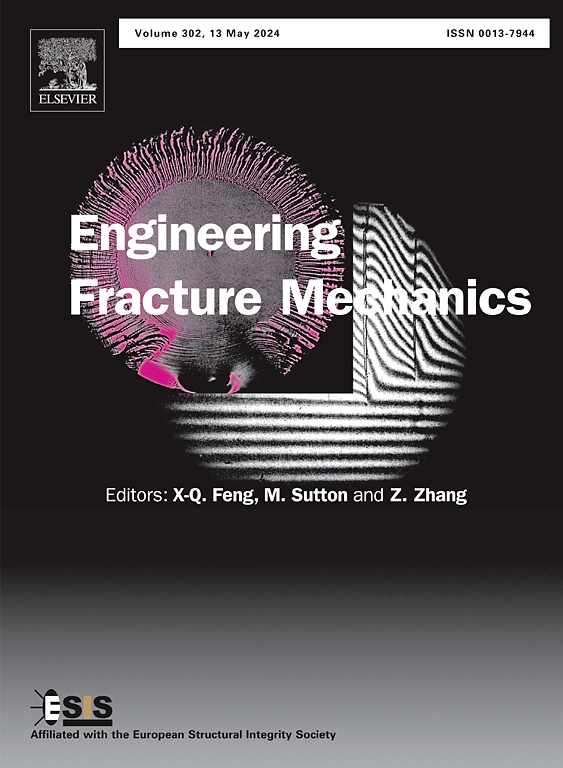α-石英裂缝性质各向异性的分子动力学研究
IF 4.7
2区 工程技术
Q1 MECHANICS
引用次数: 0
摘要
基于分子动力学模拟,系统研究了拉伸载荷作用下α-石英微断裂性能的各向异性。对α-石英模型施加拉伸载荷,研究了不同缺陷α-石英模型沿x([21 0])、y([0 0 0])和z([0 0 1])方向的断裂现象、能量演化和力学性能变化趋势。结果表明,加载方向对断裂模式、力学性能和能量分布有显著影响:x方向弹性蓄能能力更强,y方向表面能量消耗最高,z方向断裂强度和结构稳定性更强。然而,断裂过程的各向异性随缺陷尺寸的增大而减小。预制缺陷显著降低了材料的断裂强度和能量需求。x、y和z方向断裂强度最大降幅分别为44.87%、41.57%和23.12%,输入能量最大降幅分别为62.98%、62.03%和46.00%。本研究系统阐述了预制缺陷和加载方向在原子尺度上对断裂机制和力学性能的影响,突出了各向异性在断裂过程中能量分布的关键作用。该研究结果为矿物破碎和离解过程中的能量优化提供了理论支持,同时为脆性材料的力学性能提供了新的见解。本文章由计算机程序翻译,如有差异,请以英文原文为准。

Molecular dynamics study on the anisotropy of α-quartz fracture properties
The anisotropy of micro fracture properties of α-quartz was systematically studied under tensile loading based on molecular dynamics simulations. Tensile loads were applied to α-quartz models with various defects to investigate fracture phenomena, energy evolution, and trends in mechanical properties along the x ([2 1 0]), y ([0 1 0]), and z ([0 0 1]) directions. The results show that loading direction significantly affects fracture mode, mechanical properties, and energy distribution: the x direction exhibits greater elastic energy storage capacity, the y direction has the highest surface energy consumption, and the z direction shows superior fracture strength and structural stability. However, the anisotropy of the fracture process decreases as defect size increases. Prefabricated defects markedly reduce the material’s fracture strength and energy demand. The maximum reductions in fracture strength are 44.87 %, 41.57 %, and 23.12 % for the x ,y, and z directions, respectively, while input energy reductions are 62.98 %, 62.03 %, and 46.00 %. This study systematically elucidates how prefabricated defects and loading directions influence fracture mechanisms and mechanical properties at the atomic scale, highlighting the critical role of anisotropy in energy distribution during fracture. The findings offer theoretical support for energy optimization in mineral crushing and dissociation while providing new insights into the mechanical properties of brittle materials.
求助全文
通过发布文献求助,成功后即可免费获取论文全文。
去求助
来源期刊
CiteScore
8.70
自引率
13.00%
发文量
606
审稿时长
74 days
期刊介绍:
EFM covers a broad range of topics in fracture mechanics to be of interest and use to both researchers and practitioners. Contributions are welcome which address the fracture behavior of conventional engineering material systems as well as newly emerging material systems. Contributions on developments in the areas of mechanics and materials science strongly related to fracture mechanics are also welcome. Papers on fatigue are welcome if they treat the fatigue process using the methods of fracture mechanics.

 求助内容:
求助内容: 应助结果提醒方式:
应助结果提醒方式:


